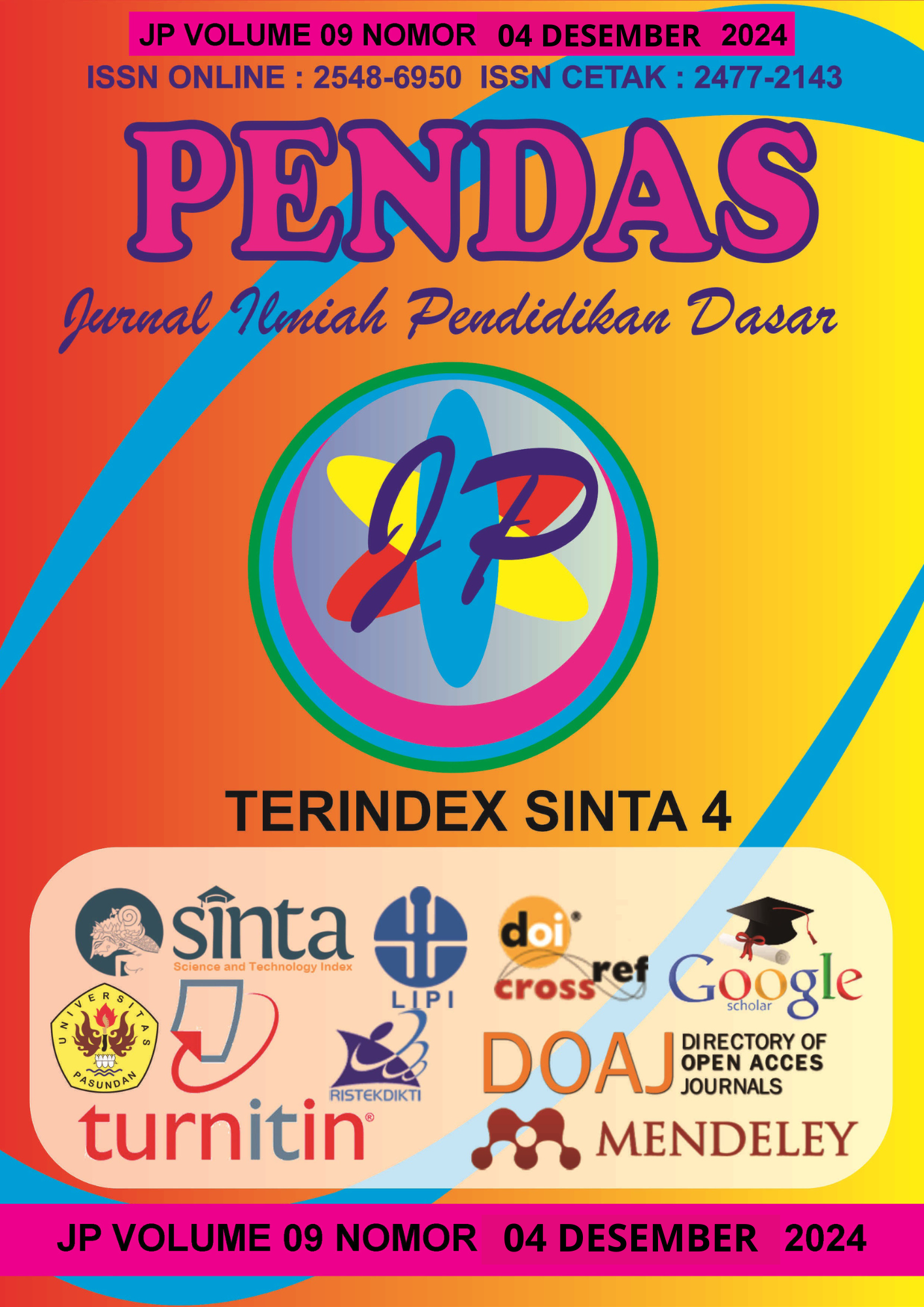PENGEMBANGAN SITUS SIGAYA UNTUK MENINGKATKAN KEMAMPUAN BERPIKIR KRITIS SISWA KELAS IV SD
DOI:
https://doi.org/10.23969/jp.v9i04.18064Keywords:
critical thinking, site development, Research and Development (R&D)Abstract
This research aims to improve the critical thinking skills of fourth grade elementary school students. The subjects in this research were 21 grade IV students at SD Negeri 03 Klepu, Pringapus District. Data collection was carried out by interviews, observation, formulating learning objectives, developing products, product trials, pretest and posttest as well as evaluation and revision. This research method uses quantitative descriptive. The research results show that SIGAYA media can improve the critical thinking skills of fourth grade elementary school students. SIGAYA Media obtained a score of 100% in material expert validation and 100% in media expert validation. Both validation results are included in the "Very valid" category. The average score for critical thinking skills obtained was the lowest score of 10 and the highest score of 90 with an average of 63. After using SIGAYA media the lowest score was 20 and the highest score was 100 with an average of 68.5. So the data can be concluded that the average score of students' pretest and posttest results increased by 5.24. SIGAYA media was declared effective because the posttest results increased from the pretest. has 0.041 which is greater than 0.05, so it is said that Ha is accepted and Ho is rejected. Ha is accepted, which means that in the pretest and posttest there are significant changes to improve the critical thinking skills of grade 4 elementary school.
Keywords: Research and Development (R&D), critical thinking, site development
Downloads
References
Aisyah, N., & Sudrajat, S. (2019). Pemanfaatan media pembelajaran oleh guru IPS SMP di Kota Yogyakarta. JIPSINDO (Jurnal Pendidikan Ilmu Pengetahuan Sosial Indonesia), 6 (2), 146-163. doi: https://doi.org/10.21831/jipsindo.v6i2.28401
Batubara, H. H. (2021). Media pembelajaran digital. PT Remaja Rosdakarya.
Darwish, A. (2011). The Impact of the New Web 2.0 Technologies in Communication, Development, and Revolutions of Societies. Journal Of Advances In Information Technology, 2 (4), 204-216
Facione, P . A. (2011). Critical thinking: What it is and why it counts. Insight assessment, 1(1), 1-23.
Kustandi, C., dan Darmawan, D. 2020. Konsep & Aplikasi Pengembangan Media Pembelajaran Bagi Pendidik di Sekolah dan Masyarakat. Kencana. Jakarta.
Monica, R., Ricky, Z., & Estuhono, E. (2021). Pengembangan Modul IPA Berbasis Model Research Based Learning pada Keterampilan 4C Siswa Sekolah Dasar. EDUKATIF : JURNAL ILMU PENDIDIKAN, 3(6). https://doi.org/10.31004/edukatif.v3i6.1470
Pramono, A., Pujiyanto, P., Puspasari, B. D., & Dhanti, N. S. (2021). Character Thematic Education Game “AK@R” of Society Themes for Children with Malang-Indonesian Visualize. International Journal of Instruction, 14(2). https://doi.org/10.29333/iji.2021.14211
Sharon, E. D., SMALDINO, L., DEBORAH, L. R., & James, D. (2014). Instructional Technology and Media for Learning Pnie, Plus Myeducationkit Without Etxt. Pearson Education Limited.
Sugiyono. (2019). Metode Penelitian Kuantitatif, Kualitatif Dan R &D. Bandung: Alfabeta
Susilowati, Y., & Sumaji, S. (2021). Interseksi berpikir kritis dengan high order thinking skill (hots) berdasarkan taksonomi bloom. JURNAL SILOGISME: Kajian Ilmu Matematika dan Pembelajarannya, 5(2), 62–71.
Wijaya, A. M., Arifin, I. F., & Badri, M. Il. (2021). Media pembelajaran digital sebagai sarana belajar mandiri di masa pandemi dalam mata pelajaran sejarah. SANDHYAKALA Jurnal Pendidikan Sejarah, Sosial Dan Budaya, 2(2), 1–10.
Zakiyah, Z., Arisandi, M., Oktora, S. D., Hidayat, A., Karlimah, K., & Saputra, E. R. (2022). Pengembangan Buku Teks Bahasa Indonesia Berbasis Media Komik Digital Bermuatan Keterampilan Berpikir Kritis. Jurnal Basicedu, 6(5). https://doi.org/10.31004/basicedu.v6i5.3869.
Downloads
Published
Issue
Section
License
Copyright (c) 2024 Pendas : Jurnal Ilmiah Pendidikan Dasar

This work is licensed under a Creative Commons Attribution 4.0 International License.



















